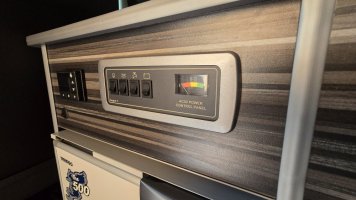Thanks for this.Depends entirely on what your usage will be.
If you only ever stay on campsites with hookup, then you won't see the benefit of LiFePO4. But if you want to do any camping where there's no hookup, and potentially no or little solar, then even a basic set up with a fridge and some lights will hammer a small AGM battery in a day or so.
LiFePO4 gives you double the usable capacity of AGM instantly, and allows bigger capacity in the same space. And would give the option of running inverter.
Our aim at minute is stopping on sites with showers etc. Next year though, we're looking at the nc500 which will be a bit of off grid I assume. Slowly easing the Mrs in to the wild camping idea










